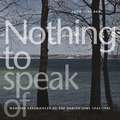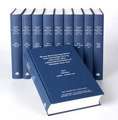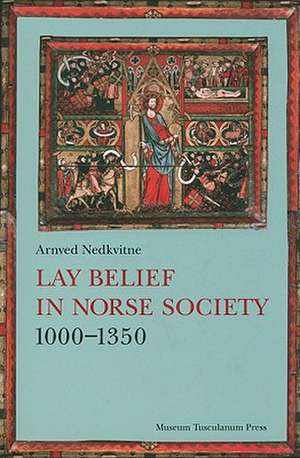Lay Belief in Norse Society 1000-1350: Emersion: Emergent Village resources for communities of faith
Autor Arnved Nedkvitneen Limba Engleză Hardback – 9 iul 2009
With insightful readings of his source material – which includes Norse sagas, Eddic literature and church homilies – Arnved Nedkvitne sheds light on the complex and diversified nature of lay belief in medieval Norse society. One of the study’s main claims suggests that laypeople had a firm belief in life after death – with all central rituals and beliefs seen as a means to this end. Yet, laypeople also had greater latitude in choosing between a sacred or secular understanding of their everyday lives than is often assumed: while religion was a fundamental source of norms, values and concepts at the time, laypeople also had to relate to state laws, codes of honour upheld by the local community and their own material interests. Lay Belief in Norse Society 1000–1350 offers a comprehensive treatment of the diffusion of strains related to the subject at hand: from orthodox rituals to remnants of pagan religion, from Christian ethics to secular honour. Combining a powerful and lucid exploration of his material with astute methodological awareness, Arnved Nedkvitne paints a vivid picture of the religious and cultural landscape of medieval Norse society.
Din seria Emersion: Emergent Village resources for communities of faith
-
 Preț: 144.99 lei
Preț: 144.99 lei - 9%
 Preț: 352.50 lei
Preț: 352.50 lei -
 Preț: 307.55 lei
Preț: 307.55 lei -
 Preț: 146.50 lei
Preț: 146.50 lei - 8%
 Preț: 360.28 lei
Preț: 360.28 lei -
 Preț: 185.37 lei
Preț: 185.37 lei -
 Preț: 183.89 lei
Preț: 183.89 lei -
 Preț: 115.53 lei
Preț: 115.53 lei - 6%
 Preț: 324.95 lei
Preț: 324.95 lei - 8%
 Preț: 346.31 lei
Preț: 346.31 lei -
 Preț: 67.35 lei
Preț: 67.35 lei -
 Preț: 101.43 lei
Preț: 101.43 lei -
 Preț: 216.90 lei
Preț: 216.90 lei - 18%
 Preț: 2261.34 lei
Preț: 2261.34 lei -
 Preț: 215.52 lei
Preț: 215.52 lei -
 Preț: 167.85 lei
Preț: 167.85 lei -
 Preț: 179.04 lei
Preț: 179.04 lei - 12%
 Preț: 290.56 lei
Preț: 290.56 lei -
 Preț: 156.84 lei
Preț: 156.84 lei - 9%
 Preț: 353.24 lei
Preț: 353.24 lei -
 Preț: 186.09 lei
Preț: 186.09 lei -
 Preț: 176.49 lei
Preț: 176.49 lei -
 Preț: 133.99 lei
Preț: 133.99 lei -
 Preț: 144.80 lei
Preț: 144.80 lei -
 Preț: 138.26 lei
Preț: 138.26 lei -
 Preț: 163.52 lei
Preț: 163.52 lei - 18%
 Preț: 502.35 lei
Preț: 502.35 lei -
 Preț: 182.98 lei
Preț: 182.98 lei -
 Preț: 208.55 lei
Preț: 208.55 lei -
 Preț: 279.55 lei
Preț: 279.55 lei - 8%
 Preț: 563.24 lei
Preț: 563.24 lei -
 Preț: 116.07 lei
Preț: 116.07 lei -
 Preț: 120.81 lei
Preț: 120.81 lei -
 Preț: 160.63 lei
Preț: 160.63 lei - 9%
 Preț: 352.77 lei
Preț: 352.77 lei -
 Preț: 106.35 lei
Preț: 106.35 lei -
 Preț: 273.93 lei
Preț: 273.93 lei -
 Preț: 316.40 lei
Preț: 316.40 lei -
 Preț: 548.71 lei
Preț: 548.71 lei -
 Preț: 138.81 lei
Preț: 138.81 lei -
 Preț: 152.25 lei
Preț: 152.25 lei -
 Preț: 229.92 lei
Preț: 229.92 lei -
 Preț: 94.22 lei
Preț: 94.22 lei -
 Preț: 203.53 lei
Preț: 203.53 lei -
 Preț: 145.41 lei
Preț: 145.41 lei - 8%
 Preț: 311.68 lei
Preț: 311.68 lei -
 Preț: 208.32 lei
Preț: 208.32 lei -
 Preț: 302.76 lei
Preț: 302.76 lei - 8%
 Preț: 565.01 lei
Preț: 565.01 lei
Preț: 348.59 lei
Preț vechi: 423.35 lei
-18% Nou
Puncte Express: 523
Preț estimativ în valută:
66.72€ • 72.50$ • 56.08£
66.72€ • 72.50$ • 56.08£
Carte disponibilă
Livrare economică 01-15 aprilie
Preluare comenzi: 021 569.72.76
Specificații
ISBN-13: 9788763507868
ISBN-10: 8763507862
Pagini: 401
Ilustrații: 24 colour & 30 b/w illus
Dimensiuni: 162 x 243 x 30 mm
Greutate: 0.93 kg
Editura: Museum Tusculanum Press
Colecția Museum Tusculanum Press
Seria Emersion: Emergent Village resources for communities of faith
ISBN-10: 8763507862
Pagini: 401
Ilustrații: 24 colour & 30 b/w illus
Dimensiuni: 162 x 243 x 30 mm
Greutate: 0.93 kg
Editura: Museum Tusculanum Press
Colecția Museum Tusculanum Press
Seria Emersion: Emergent Village resources for communities of faith
Recenzii
The author successfully uses primary sources such as Norse sagas and church homilies to reconstruct and explore not only the changing church, but also the lay community's changing understanding of the church. ... Nedkvitne attempts to illustrate an incredibly complex and often overlooked aspect of medieval religious understanding. This important work, clearly written for experts in the field of religious history with a firm understanding of the source material and time period, successfully advances research and understanding of lay belief in Norse society...highly recommended.- A.A. Leykam, CHOICE, Vol. 47 No. 10. June 2010.
Nedkvitne controls Norway's sparse sources as expertly as the better-known Icelandic ones. And unlike Anglophone Nordicists, whose sensibilities generally run literary, he traces his lineage to social history, fueling some radicai departures from accepted wisdom... This is the stuff constructive controversy is made of. ... The book is handsomely produced, with stunning color photographs of many sites and artifacts.- Oren Falk, Speculum, 85/3, 2010.
Notă biografică
Arnved Nedkvinte is Professor of Medieval History and Director of the Centre for Medieval Studies, University of Bergen.
Cuprins
Preface
Introduction
The subject
Earlier research on the subject
Methods
The sources
The chapters
Chapter I: Eternal life and salvation
Chapter II: Rituals
Introduction
Baptism: purification from original sin and integration
Divine service: purification, integration and distinction
The last rites: purification and distinction
The sacrament of penance: from collective to individual purification
Individualised purification rituals after the Gregorian reform
Why did some religious rituals fail?
Conclusion
Chapter III: Religious ethics
Introduction
Religious ethics before the Gregorian reform
The promotion of a pacified society 1150–1350
From secular to religious poor relief: what difference did it make?
The relative strength of secular and religious norms
Religious ethics for clerics only?
Conclusion
Chapter IV: Help in this life through supernatural intervention
Introduction
What is a supernatural intervention?
Divine and magical intervention as religious and political propaganda
Divine intervention to change the natural course of events?
Divine interventions to make predictions?
Magic
Conclusion
Conclusion: Religion's power—and its limits
Appendix
Notes
Bibliography
Index
Introduction
The subject
Earlier research on the subject
Methods
The sources
The chapters
Chapter I: Eternal life and salvation
Chapter II: Rituals
Introduction
Baptism: purification from original sin and integration
Divine service: purification, integration and distinction
The last rites: purification and distinction
The sacrament of penance: from collective to individual purification
Individualised purification rituals after the Gregorian reform
Why did some religious rituals fail?
Conclusion
Chapter III: Religious ethics
Introduction
Religious ethics before the Gregorian reform
The promotion of a pacified society 1150–1350
From secular to religious poor relief: what difference did it make?
The relative strength of secular and religious norms
Religious ethics for clerics only?
Conclusion
Chapter IV: Help in this life through supernatural intervention
Introduction
What is a supernatural intervention?
Divine and magical intervention as religious and political propaganda
Divine intervention to change the natural course of events?
Divine interventions to make predictions?
Magic
Conclusion
Conclusion: Religion's power—and its limits
Appendix
Notes
Bibliography
Index
